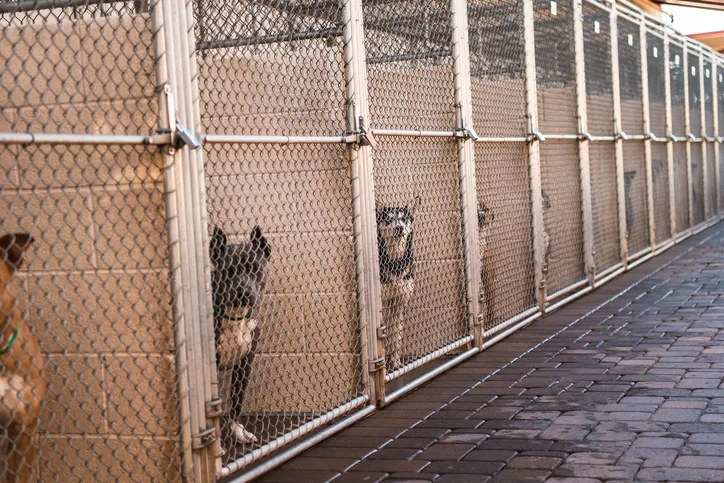Preventing Parasitism in Breeding Kennels
Audrey Ruple, DVM, MS, PhD, MRCVS, DACVPM, Purdue University

In the Literature
Ash A, Lymbery A, Godfrey S, Shiel R, Paul A. Substrate type and age are risk factors for gastrointestinal parasitism in greyhound kennels. Vet Parasitol. 2019;265:7-14.
The Research …
Dog kennels can present challenges to parasite-control programs due in part to dogs of all life stages being housed in close proximity.1,2 For instance, reactivation of some parasitic infections (eg, Toxocara canis, Ancylostoma caninum) can occur during whelping, and puppies can be a source of infection for uninfected dogs in the same location.3,4 Although detrimental to any dog, parasitic infection can be particularly problematic for athletic dogs, as acute infection with some species can lead to anemia, and chronic infection can result in growth retardation and failure to thrive.5,6
This study evaluated the impact of parasitism on greyhounds in Australian breeding kennels. Previous studies have reported parasite prevalence in greyhound kennels in other countries to be ≈40% to 46%.1,7 Parasite prevalence has also been determined in other dog populations in Australia, including other breeds in breeding kennels, in which the parasite prevalence was estimated to be ≈33%.8 However, no information about parasite prevalence or risk factors for infection had yet been determined for greyhounds in breeding kennels in Australia.
In this study, fecal samples were collected from 721 greyhounds in breeding kennels across 5 Australian states, and questionnaires were supplied to each dog owner/trainer. Two parasitic tests were applied to each fecal sample (ie, wet malachite-stained smear, zinc sulphate centrifugation flotation), and ova/cysts were identified at the level of genus and/or species when possible. A subset of samples positive for A caninum, Giardia spp, Taenia spp, and/or Neospora/Hammondia spp underwent molecular characterization to determine which species were present. Risk factor analysis was performed using modeling techniques that accounted for the effects of individual kennels.
Total parasite prevalence was determined to be 60.3%, which is higher than what has been reported in greyhounds in breeding kennels in other countries. The parasite genera reported most frequently were Sarcocystis, hookworm (ie, Ancylostoma, Uncinaria stenocephala), Giardia, and Toxocara. The 2 major risk factors associated with parasitism were the dominant surface the dogs were housed on and the age of the dog; geographic region was also a risk factor. Dogs housed on concrete had a lower proportion of parasitism than did dogs housed on grass or sand, and adult dogs had a lower prevalence of parasitism than did juvenile dogs. The geographic region in which the kennel was located influenced the prevalence of the different parasite genera.
… The Takeaways
Key pearls to put into practice:
Kennel flooring in breeding facilities may impact overall parasite prevalence; thus, choosing surfaces that can be more easily cleaned and disinfected may help decrease parasite load.
Restricting access of juvenile dogs to adult housing areas may help prevent the spread of parasites in the kennel environment.
Recognizing which parasite species are prevalent in the geographic region in which the kennel is located may help inform best practices when designing a parasite-control program.
You are reading 2-Minute Takeaways, a research summary resource presented by Clinician’s Brief. Clinician’s Brief does not conduct primary research.